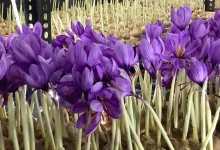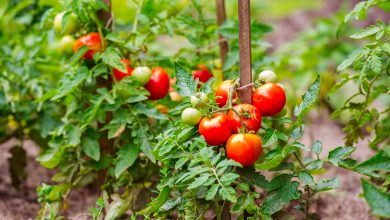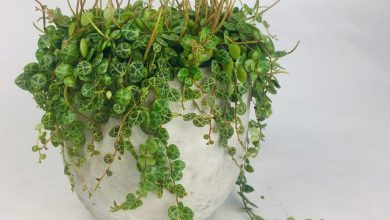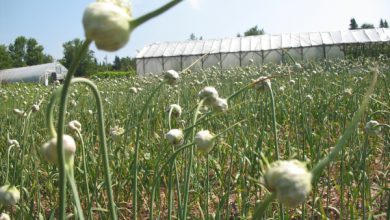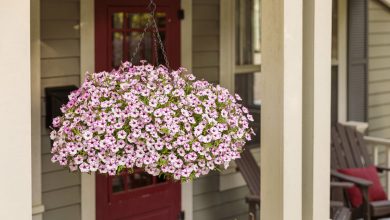Indoor Saffron Farming with Advanced Technology – The Future is Golden

Saffron, the “king of spices,” has captivated palates for millennia with its rich aroma, vibrant color, and unparalleled flavor. Traditionally cultivated in open fields with specific climatic requirements, saffron production remains a laborious and geographically limited process. However, the future of saffron farming is blooming indoors, fueled by advancements in technology like aeroponics and LED lighting. This article explores the potential of these innovations for optimizing indoor saffron production, paving the way for a more sustainable, efficient, and year-round harvest of this precious spice.
Challenges of Traditional Saffron Farming:
Cultivating saffron (Crocus sativus L.) outdoors presents several challenges:
- Climate Dependence: Saffron thrives in cool, dry regions with specific temperature and precipitation patterns. This limits its geographical range, making it susceptible to climate change.
- Labor-intensive Harvest: Saffron threads, the dried stigmas of the saffron crocus flower, require meticulous hand-picking, contributing to the high cost of the spice.
- Limited Yields: Traditional farming methods produce relatively low yields per unit area.
- Pest and Disease Risks: Open-field cultivation exposes saffron plants to pests and diseases, impacting product quality and requiring the use of pesticides.
Aeroponics: A Breath of Fresh Air for Saffron Farming
Aeroponics, a method of growing plants in a mist environment without soil or any growing medium, emerges as a revolutionary approach for indoor saffron cultivation. Plant roots are suspended in a chamber where they are periodically misted with a nutrient-rich solution.
Optimizing Growth with Aeroponics:
- Controlled Environment: Aeroponic systems create a controlled environment where temperature, humidity, and nutrient levels can be precisely tailored for saffron crocus growth. This reduces dependence on specific climates and minimizes the impact of weather fluctuations.
- Increased Yields: Aeroponics allows for higher plant densities compared to traditional methods, leading to potentially significant yield increases per unit area.
- Enhanced Plant Health: The constant misting ensures optimal oxygen availability for the roots, promoting overall plant health and potentially reducing susceptibility to diseases.
- Water Conservation: Aeroponic systems utilize significantly less water compared to traditional farming or even hydroponics, making them incredibly water-efficient.
Harnessing the Power of LED Lighting
LED (light-emitting diode) lighting technology plays a crucial role in optimizing indoor saffron production. LEDs offer several advantages over traditional grow lights:
- Spectrum Control: LEDs can be programmed to emit specific wavelengths of light that are most beneficial for saffron crocus growth. This allows for targeted light spectrums that mimic natural sunlight or encourage specific growth stages.
- Energy Efficiency: LEDs are significantly more energy-efficient compared to conventional grow lights, leading to reduced operational costs and a smaller environmental footprint.
- Reduced Heat Generation: Unlike traditional grow lights, LEDs produce minimal heat, eliminating the need for additional cooling systems within the controlled environment.
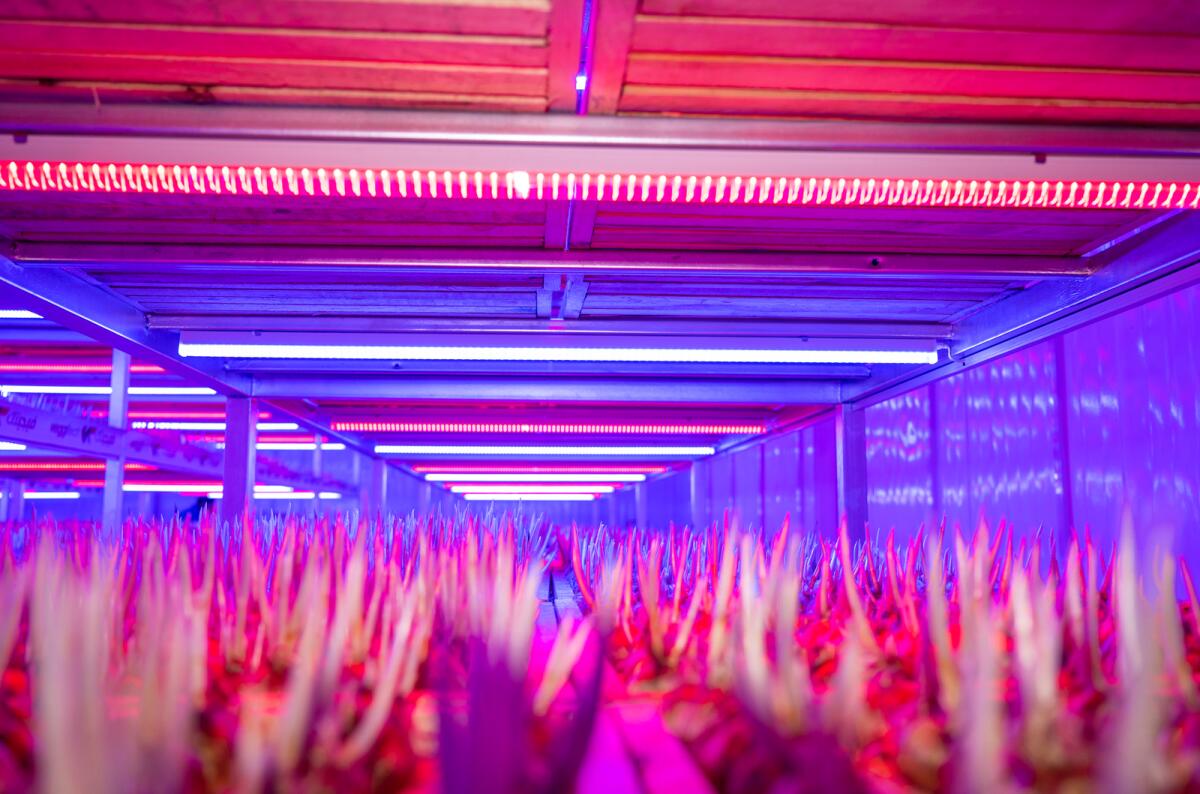
Fine-tuning Growth with LEDs:
- Mimicking Sunlight: By simulating the natural light cycle of saffron-growing regions, LED lights can promote optimal flowering and crocus development.
- Enhancing Crocin Production: Specific LED wavelengths can be used to encourage the production of crocin, the compound responsible for saffron’s vibrant color and potent flavor.
- Year-round Cultivation: LED lighting enables saffron production to be independent of daylight hours, making year-round cultivation a possibility.
The Synergistic Effect: Aeroponics and LEDs Working Together
Aeroponics and LED lighting work synergistically to create an ideal environment for cultivating saffron indoors. The precise control over nutrients and light provided by these technologies allows for:
- Faster Growth Cycles: Optimized conditions can potentially shorten saffron crocus growth cycles, leading to more frequent harvests.
- Improved Saffron Quality: Precise control over the environment can contribute to the production of consistent, high-quality saffron with vibrant color and strong flavor.
- Reduced Labor Needs: Unlike traditional harvesting methods, aeroponic systems eliminate the need for soil management and minimize the need for weeding.
Challenges and Considerations for Indoor Saffron Farming
While advancements in technology offer immense potential, indoor saffron farming also presents challenges to consider:
- Initial Investment Costs: Setting up an aeroponic system with LED lighting requires a significant initial investment compared to traditional farming methods.
- Technical Expertise: Operating and maintaining these systems effectively requires technical knowledge of aeroponics and LED lighting technology.
- Energy Consumption: While LEDs are more energy-efficient, ensuring sufficient lighting for optimal growth necessitates ongoing energy consumption.
The Future of Saffron: A Golden Horizon
Despite the challenges, the potential benefits of indoor saffron farming with aeroponics and LED lighting are undeniable. This technology-driven approach paves the way for a more sustainable, efficient, and year-round production of saffron. As research and development continue, we can expect further advancements that reduce costs.
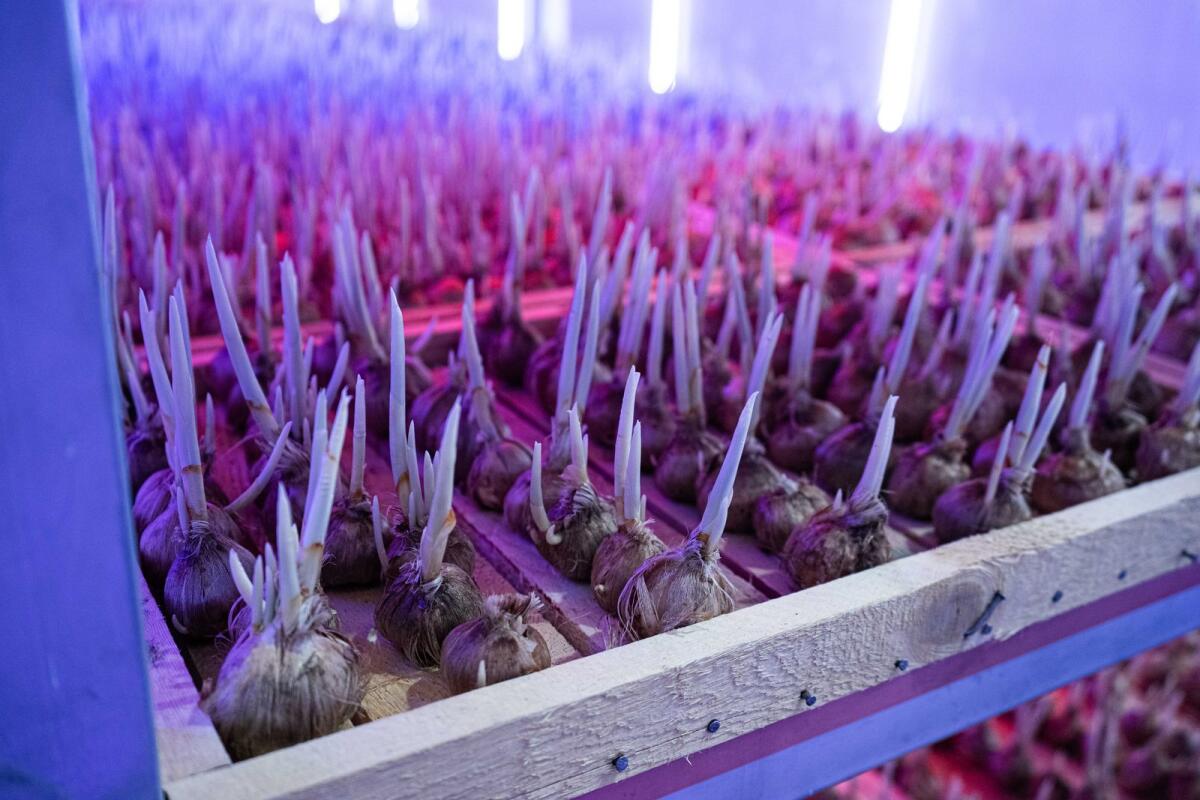
Addressing Challenges and Considerations:
The high initial investment costs associated with setting up an indoor saffron farm with aeroponics and LEDs can be mitigated through several strategies:
- Gradual Implementation: Start with a smaller-scale system and gradually expand as your knowledge and profits increase.
- Government Grants and Incentives: Research and apply for government grants or programs that support sustainable agriculture practices.
- Collaborative Ventures: Partner with other aspiring saffron farmers to share the initial investment and operational costs.
The technical expertise required to operate these systems can be acquired through various means:
- Training Programs: Look for educational programs or workshops offered by agricultural universities, hydroponics companies, or LED lighting manufacturers.
- Online Resources: Numerous online resources provide detailed information on aeroponics, LED lighting, and saffron cultivation.
- Consulting Services: Consider hiring experienced consultants who can assist with system setup, operation, and troubleshooting.
While energy consumption is a factor, the exceptional efficiency of LEDs compared to traditional grow lights significantly reduces the environmental impact. Additionally, exploring renewable energy sources like solar power can further minimize the carbon footprint of indoor saffron farming.
The Broader Impact of Indoor Saffron Farming
The potential benefits of indoor saffron farming extend beyond economic gains and environmental sustainability:
- Accessibility of Saffron: Indoor cultivation can make saffron more accessible to consumers worldwide, potentially lowering its market price and bringing its unique flavor to a wider audience.
- Reduced Reliance on Traditional Saffron-Growing Regions: This method lessens dependence on specific climates, potentially mitigating the impact of climate change on saffron production.
- Local and Vertical Farming Opportunities: Indoor saffron farming can be adapted to vertical farming systems, creating opportunities for urban agriculture and local food production.
Conclusion: A Golden Opportunity
Indoor saffron farming with aeroponics and LED lighting presents a transformative approach to cultivating this precious spice. By harnessing the power of technology, we can create a sustainable, efficient, and year-round production system. As research and development progress, overcoming challenges and optimizing practices will make indoor saffron farming a commercially viable and environmentally responsible endeavor. The future of saffron is undoubtedly golden, and with continued innovation, this “king of spices” will soon be gracing tables across the globe.


